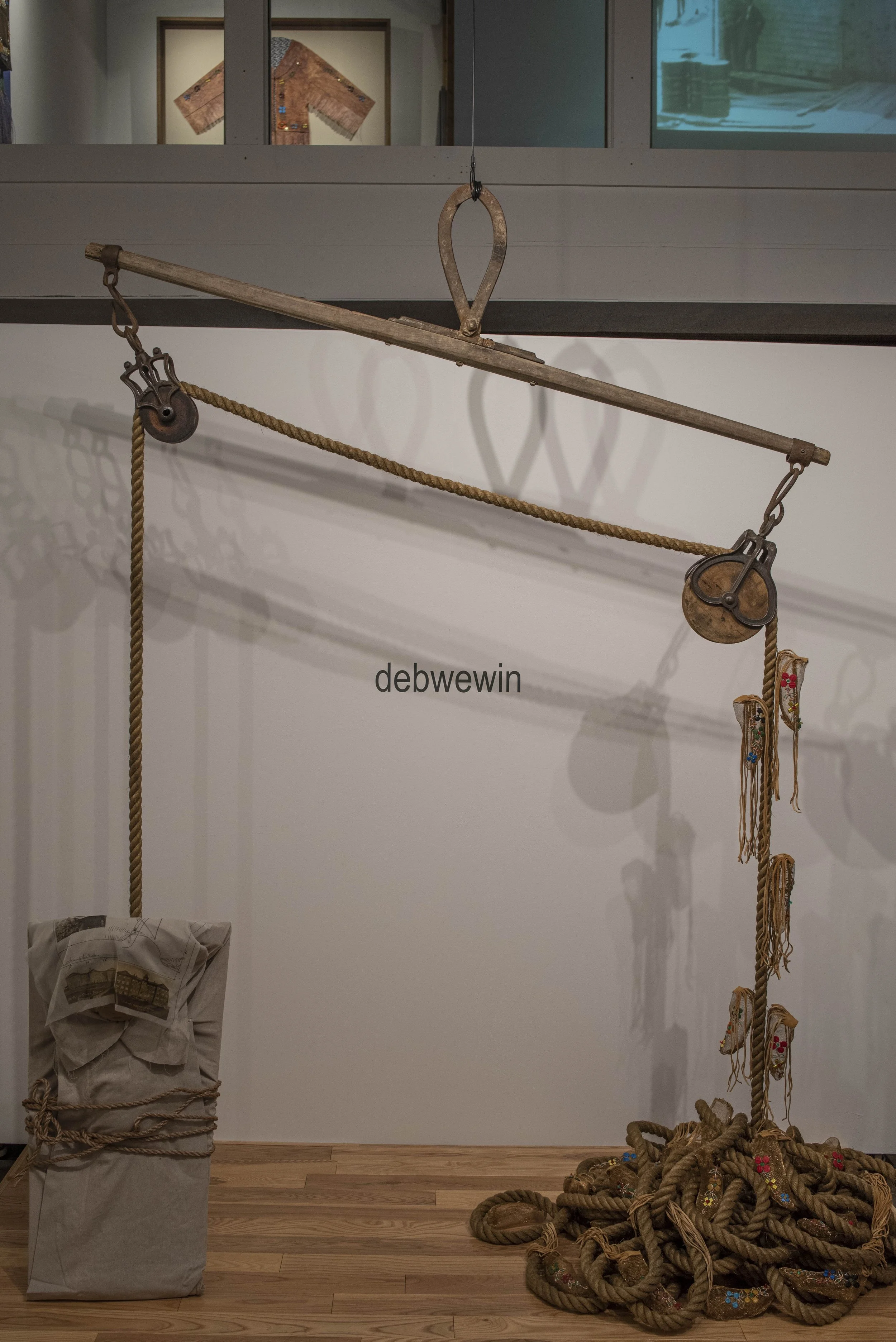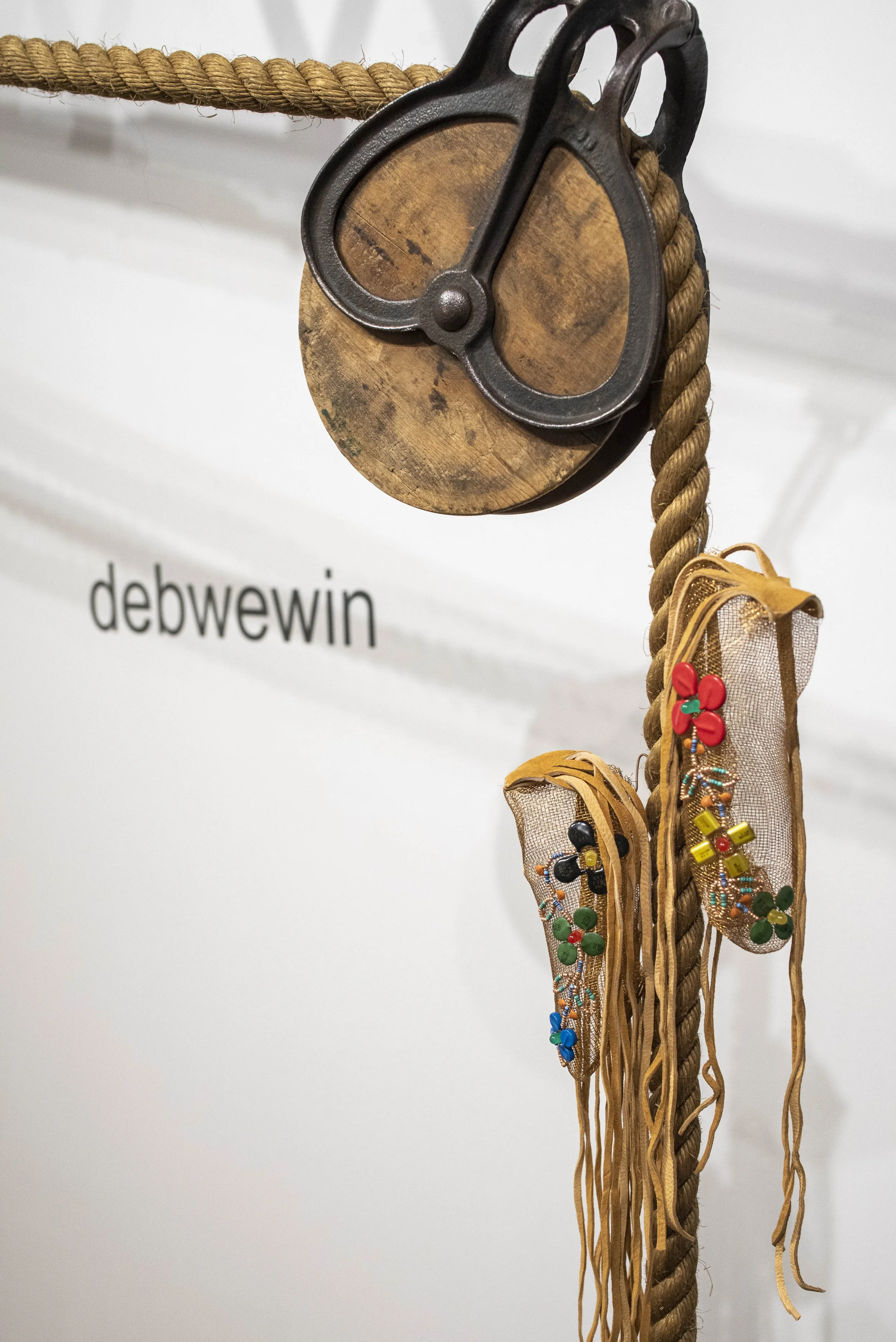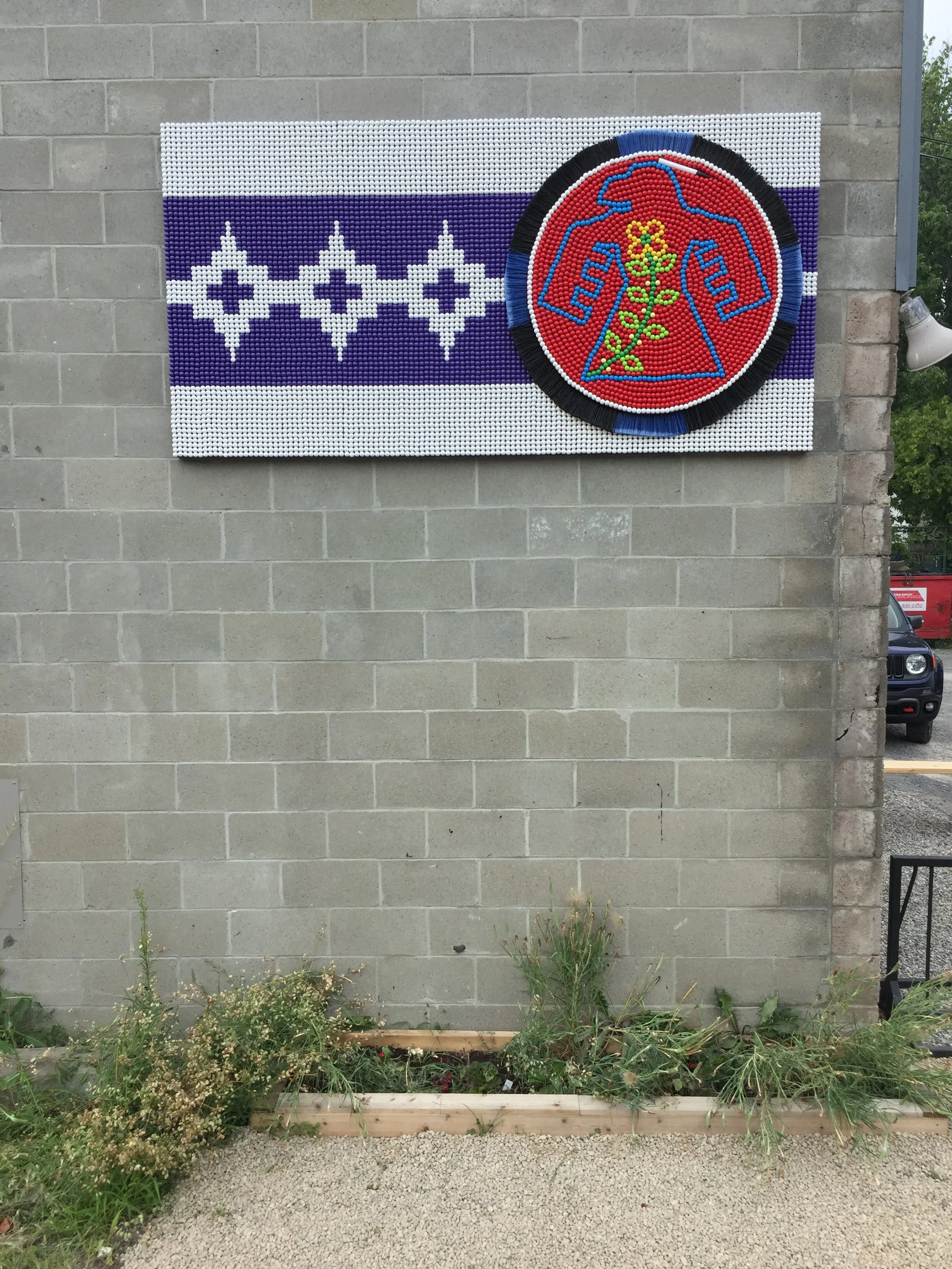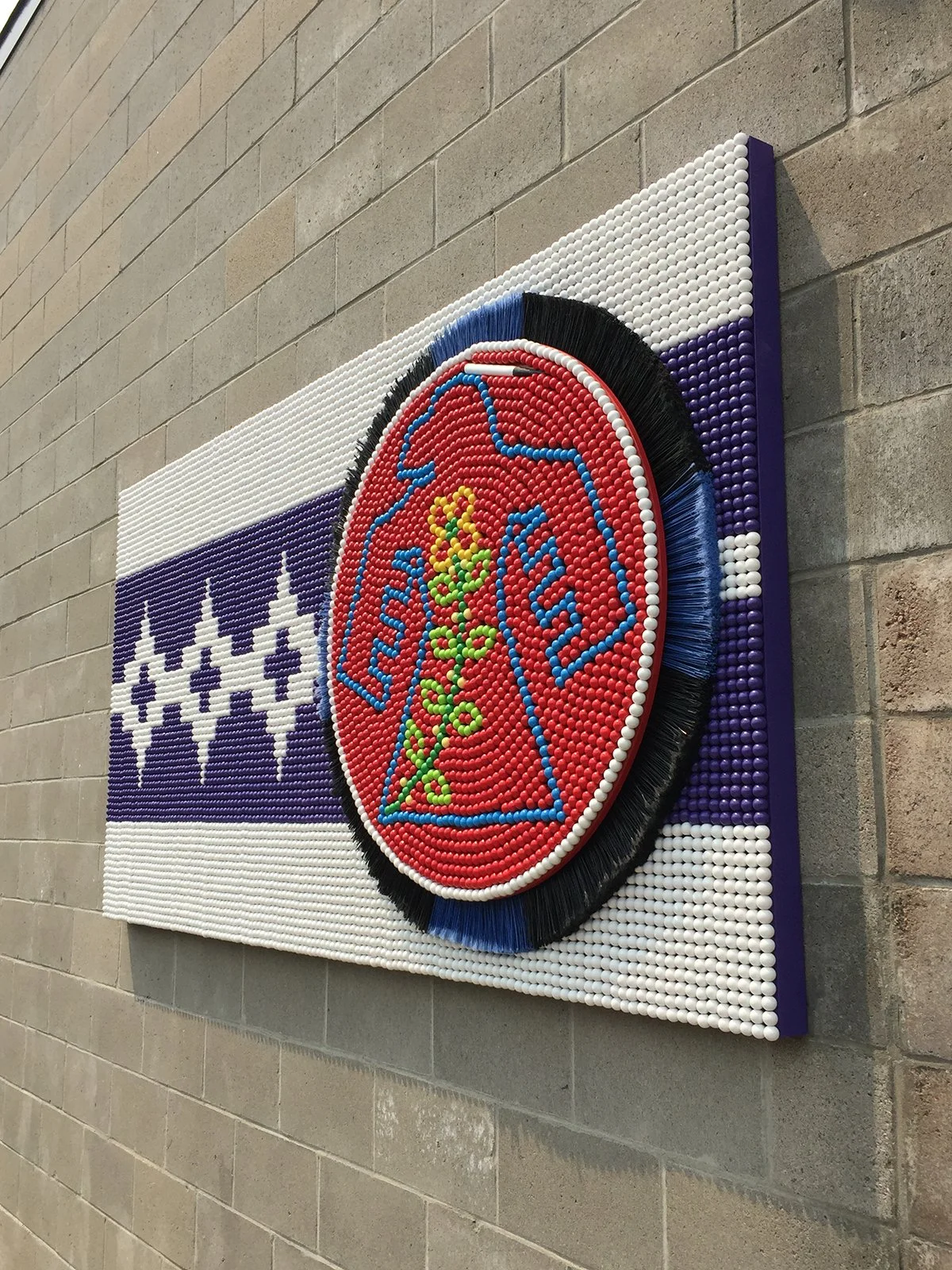Material Matters – Materiality of Anishinaabeg-biimadiziwin (Anishinaabeg culture).
For Ace, the focus on materiality can evoke a deeper understanding of the adverse impact of colonization on Anishinaabeg traditional knowledge and the current trend of resurgence and survivance.
In this hyper-digital and cyber-age of existence, we have become increasingly disconnected from our ability to fully experience and comprehend the mnemonic qualities of the hand-made and our ability to decipher the experientiality of its sensory and intellectual engagement. These works attempt to bridge this precipice between the material and immaterial realms and the historical and contemporary.
Three new large-scale paperwork of ceremonial dance regalia were created specifically for this exhibition. They stand as a testimony to the survival of dance and its resurgence and continuity though the integration of beadwork and contemporary electronic component materials. The use of capacitors, resistors, circuit boards and light emitting diodes is also a direct reference to the contemporaneity and immaterial realm of our digital age.
Ace has also produced a large-scale wall sculpture Symbols of Power and Resistance for this exhibition, representing a fragment of an existing Anishinaabeg alliance wampum belt that incorporates the Binesi (Thunderbird) as a symbol of power. This large-scale work consists of more than 8,000 wooden beads.
Material Matters – Materiality of Anishiinaabeg-bimadizwin is a foray into the mnemonic visual language that is conveyed through culturally specific representations of material culture, as inherent in medicinal flowers, morning star, and Thunderbird motifs, through a convergence of the historical and contemporary. When read together, these new works focus attention on the role of semiotics in material culture as symbols of power and resistance, innovation and transformation as well as the survival and continuity of a culture: all of this is in direct response to the on-going impact of colonization.
This exhibition provides Ace with a new opportunity to examine the relationship of material and materiality and how it informs his work and subsequently the audience. As well, the work provides an opportunity for self-reflection and are indicative of Ace’s cultural knowledge of Anishinaabe protocols, ceremony, dance, teachings, and initiation that he personally underwent upon entry into the powwow circle.
Barry Ace
Anishinaabe (Odawa), b. 1958 (Sudbury, Ontario)
Barry Ace currently lives in Ottawa, Canada. He is a debendaagzijig (citizen) of M’Chigeeng First Nation, Odawa Mnis (Manitoulin Island), Ontario, Canada. His mixed media paintings and assemblage textile works explore various aspects of cultural continuity and the confluence of the historical and contemporary.







